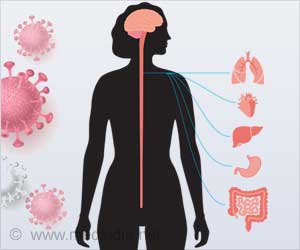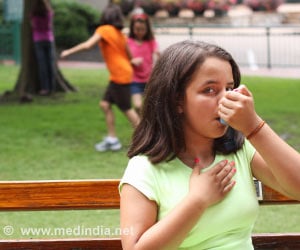Dysphagia is a new symptom of COVID-19 during the SARS-CoV-2 Omicron variant wave.
- As new variants of COVID-19 take shape, there is a shift from traditional symptoms of COVID-19
- Dysphagia has been noted as a common symptom of COVID-19 among the patients
- The treatment of COVID-19 now includes the use of high-dose analgesics, NSAIDs for mild to moderate cases, and corticosteroids in severe cases
Acute odynophagia: A new symptom of COVID-19 during the SARS-CoV-2 Omicron variant wave in Sweden
Go to source). The SARS-CoV-2 infection has been linked to an estimated 360 million illnesses and 5.6 million fatalities since the start of the COVID-19 pandemic. While vaccine protection against the SARS-CoV-2 virus has been rising globally, the first incidence of Omicron—the novel form of concern—has been reported. Since then, Omicron has swiftly spread over the world, displacing the Delta form and creating fresh outbreaks in several nations.
The Common Trend of Symptoms Among COVID-19 Patients
“Since the start of the pandemic, ZOE has consistently documented the most common COVID symptoms and how they’ve changed over time,” according to the ZOE Health Study, which collects patients’ data on their symptoms.“The SARS-CoV-2 coronavirus that causes COVID-19, like all viruses, is constantly developing in terms of its ability to transmit and the symptoms it produces.”
A case series of COVID-19-positive patients who sought treatment at the ENT ED for acute odynophagia, severe sore throat, and fever was presented.
During the initial weeks of the Omicron wave in Sweden, “we saw a large number of young patients with this clinical indication of SARS-CoV-2 infection. COVID-19-associated acute laryngitis and/or pharyngitis occurred in all subjects.”
The clinical triad of symptoms displayed by these patients suggested that they were suffering from the potentially fatal illness epiglottitis. As a result, a prompt clinical examination, including laryngoscopy, was required to determine a diagnosis and guide the treatment.
“However, we found seven cases of acute epiglottitis with concurrent COVID-19 infection in the literature, thus this diagnosis should be investigated and quickly ruled out, especially if a patient presents with a characteristic clinical triad,” claimed the ZOE health study.
Preliminary research suggests that Omicron causes milder symptoms than Delta, although it is unclear if the lower severity is attributable to the variant’s features or increased global vaccination immunity. Even though preliminary research suggests that Omicron is milder, a considerable number of patients require hospitalization to manage their symptoms. In the described cohort, 20% required hospitalization for symptom treatment. All of the patients had received at least two doses of the COVID-19 vaccine.
The author of the study added, “Once epiglottitis was ruled out, patients in the described cohort were given diagnoses such as acute viral laryngitis or acute viral pharyngitis based on laryngoscopy images of the larynx and hypopharynx.”
A few patients with secondary bacterial infections were given antibiotics orally. Acute laryngitis is traditionally treated with voice rest, analgesic medication, and humidification. According to the findings of a Cochrane review on the benefits of antibiotic treatment for acute laryngitis in adults, antibiotics appear to be ineffective in treating this condition.
Finally, we provide a case series of 20 patients who were brought to our ENT ED during the SARS-CoV-2 Omicron wave with COVID-19-associated laryngotracheitis and pharyngitis. The most common symptoms in those patients were acute odynophagia, a severe sore throat, and fever.
The majority of patients were young, healthy, and had received the COVID-19 vaccination. This clinical manifestation of COVID-19 was unusual in previous waves. Because a similar set of symptoms is associated with the potentially fatal illness epiglottitis, a quick examination of the larynx is advised to rule out upper airway inflammatory emphysema.
None of the patients with COVID-19-related odynophagia had edema in the larynx or epiglottis, resulting in airway obstruction. Despite being vaccinated against COVID-19, 20% of the patient’s required hospitalization for symptom treatment. In the absence of airway edema, acute odynophagia is treated with high-dose analgesics, NSAIDs, and local anesthetics to numb the mouth and throat lining. In severe cases, epinephrine inhalation and oral/intravenous corticosteroids may be required to ease symptoms.
Reference:
- Acute odynophagia: A new symptom of COVID-19 during the SARS-CoV-2 Omicron variant wave in Sweden - (https://pubmed.ncbi.nlm.nih.gov/35170099/)
Source-Medindia















